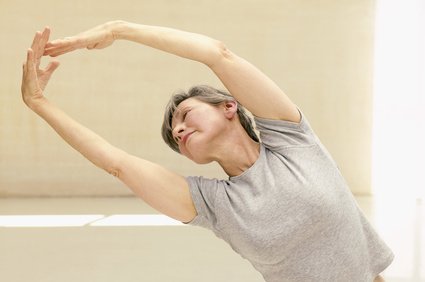View basket (0 items $0.00)

Yoga May Decrease Health Complications of Diabetes
The number of people affected with type 2 diabetes has reached epidemic proportions worldwide, with the highest level of increase yearly seen among seniors aged 65 and above. Diabetes often carries with it numerous adverse complications in those suffering from the condition, and people with diabetes are at higher risk for heart disease, bone and joint issues, and skin disorders.
A recent study conducted in India may offer preliminary evidence that yoga may have preventive and protective effects for this people with diabetes by reducing stress and improving the antioxidant defense system.
This study included 143 people between the ages of 60 and 70 with Type 2 Diabetes. Each had a five to ten year history of Type 2 diabetes with poor glycemic control. Participants were all middle class, literate, living with their families, and they continued with their conventional medications without changing any dosages.
During the study, half the participants were assigned to a study group, which practiced yoga under the guidance of an experienced yoga teacher for 90 minutes daily for three months. The control group participated in a comparable control session.
Blood work was conducted for both groups (glucose, lipid profile, cortisol, and others) at the beginning of the study and on day 90. At the end of the three months, the yoga group showed a decrease in fasting glucose, total cholesterol, triglyceride, LDL-cholesterol, T.chol/HDL ratio and a significant increase in good HDL – cholesterol.
In addition, yoga participants also showed significantly decreased levels of the stress hormone cortisol, while participants in the control group had increased cortisol levels. Stress is thought to aggravate diabetes; studies have shown that cortisol level tends to increase along with the severity of the condition. Increasing cortisol have been strongly associated with increasing pathophysiology in people suffering from diabetes.
Several markers of oxidative stress also improved in the study group, another encouraging finding, as oxidative stress also plays a major role in the development of health complications in people suffering from type 2 diabetes mellitus.
The slow rhythmic movements of yoga postures stimulate organs and glands with easy bending and extensions, whereas aerobic exercise can be less effective for older population groups, because of the strenuousness of the movements required.
Although yoga won’t offer a cure for diabetes, study results indicate that the ancient practice of hatha yoga can help keep the symptoms of diabetics under control and to protect against long-term complications. As such, a regular yoga practice may be a useful complement to other lifestyle changes that can help manage the condition and reduce long-term health complications.
Featured Courses








